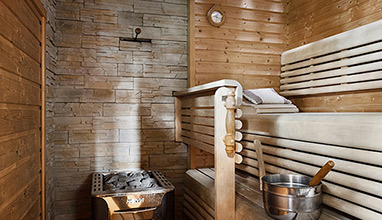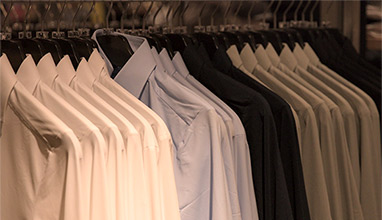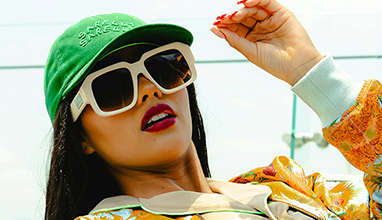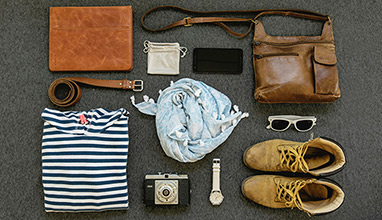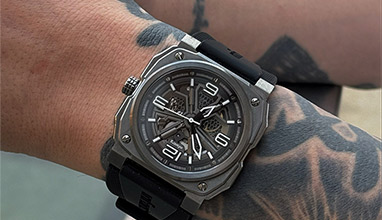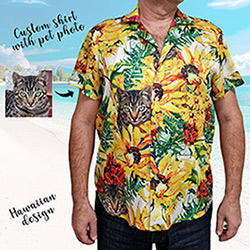The Rise of Hidden-Support Fashion: How Modern Designs Create Smoother Silhouettes
Fashion has always been about illusion. From the cinched silhouettes of the past to today’s engineered fabrics, designers have long understood the power of structure. What has changed, however, is how subtle that structure has become. Modern consumers want support that feels natural, effortless and comfortable. They want clothes that skim the body, enhance their shape and create a clean, confident outline without ever revealing the work happening beneath the surface. This desire has led to one of the most significant shifts in contemporary style: the rise of hidden-support fashion.

Hidden support is shaping the industry from the inside out. Seamless lingerie, contouring swimwear and everyday garments with built-in structure are giving people new ways to look and feel their best without the discomfort traditionally associated with shaping garments. The trend marks a clear evolution in both technology and attitude, blending engineering with elegance in a way that sits perfectly in the modern wardrobe.
Comfort Becomes a Design Priority
The first major shift began when comfort became a style essential rather than an afterthought. For years, shapewear relied on rigid boning, heavy compression and fabrics that prioritised silhouette over comfort. As fashion and wellness slowly merged, consumers became more vocal about wanting garments that worked with their body instead of against it.
Athleisure played a huge role in this transition. With its soft yet sculpting fabrics, the category introduced the idea that support could be flexible, breathable and surprisingly comfortable. Body-positive conversations further accelerated the change by encouraging brands to think about support in terms of enhancement, not restriction. Hidden-support fashion grew from these movements, offering a gentler, more intuitive approach to shaping.
Technology That Works Behind the Scenes
Technology has driven the rise of hidden-support design more than any single aesthetic movement. Seamless construction has transformed lingerie and base layers, allowing garments to be knitted in smooth, continuous shapes rather than stitched with bulky seams. These seamless pieces sit flatter against the skin, giving a clean outline under slip dresses, silk skirts and tailored trousers. They are soft, lightweight and almost invisible beneath clothing, offering comfort that genuinely lasts all day.
Targeted compression is another advancement reshaping the category. Instead of creating high-intensity shaping everywhere, modern fabrics allow for reinforced zones exactly where support is needed, such as the stomach, hips or back. The rest of the garment remains stretchy, breathable and easy to wear, which means support can be present without ever feeling overwhelming.
Swimwear has also embraced hidden-support construction. Contemporary swimsuits often feature integrated mesh panels, sculpting linings and reinforced fronts that create a smooth finish while still looking like regular swimwear. The beauty of this construction is that it feels effortless when you move. Whether swimming, walking or relaxing, the garment works quietly in the background, shaping gently while allowing complete freedom.
Specialist undergarments have advanced too. Options such as tucking underwear provide discreet smoothing and support for people seeking a flatter and more secure silhouette. These garments form part of the wider hidden-support movement: clothes that work harder while remaining completely unseen.
Support Woven Into Everyday Clothing
What began in lingerie has expanded into almost every category of fashion. Designers are integrating support directly into garments so that people no longer need to rely on multiple layers to achieve a polished look. Contouring dresses often include internal mesh panels or double linings to create shape without the need for additional foundation garments, sculpting the waist and enhancing the natural curve of the body while maintaining fluidity on the outside.
Knitwear, once synonymous with relaxed silhouettes, has been reimagined through tech-driven ribbing and directional stretch that subtly shapes the body. Jumpers, dresses and co-ords gain a refined, flattering structure without sacrificing softness. Even tailored trousers now benefit from discreet contouring waistbands and panelled linings that help smooth the front profile. These details remain invisible from the outside, yet they dramatically improve fit and confidence.
Athleisure’s influence is impossible to ignore. High-rise leggings with sculpting seams introduced the idea that comfort and contouring could coexist. That thinking has now evolved into denim, dresses and loungewear, proving that supportive design can feel completely natural. This shift has redefined everyday dressing, turning simple wardrobe staples into garments that quietly shape and support.
A Smoother Finish for Every Body
One reason hidden-support fashion has gained so much momentum is its broad appeal. It is not about pushing the body into a specific ideal but about creating a clean, elegant finish under clothing. The smooth lines feel modern, streamlined and universally flattering. With social media and constant photography shaping daily life, people increasingly want outfits that look polished from every angle, whether at a special event or simply going about their day.
Sustainability Shapes the Next Wave
Sustainability is also influencing hidden-support design. Brands are experimenting with recycled nylon, regenerated elastane and bio-based stretch fibres, all while improving the longevity of power-mesh materials. By integrating support into garment construction, designers can reduce excess fabric, unnecessary layers and waste. Future innovations may include biodegradable stretch fibres and closed-loop manufacturing that keeps materials in circulation for longer.
A Cultural Shift Towards Quiet Confidence
The rise of hidden-support fashion reflects broader cultural themes. People are embracing individuality and seeking clothing that empowers rather than confines. Minimalist fashion’s focus on crisp lines naturally increases demand for garments that create subtle structure. As silhouettes become sleeker, the need for invisible support grows. Hidden support offers a refined approach to dressing that feels effortless yet intentional.
The Future of Invisible Structure
As technology continues to evolve, hidden-support fashion is set to become even more advanced. Designers are pushing the boundaries of textile engineering to create fabrics that are lighter, softer and more adaptive than ever. The next generation of garments will likely include smarter support zones, sleeker integrations in swimwear and lingerie, and clothing that responds more intuitively to movement.
Ultimately, hidden-support fashion represents a reimagining of how clothing interacts with the body. It offers a quiet kind of confidence, the sort that lets people feel effortlessly put together from the moment they get dressed. If modern fashion has proven anything, it is that the most transformative innovations are often the ones you never see.
Hits: 52 | Leave a comment
Tags:fashion, tucking underwear



